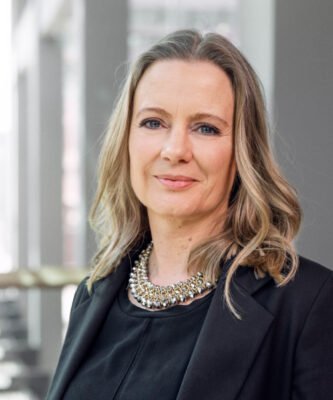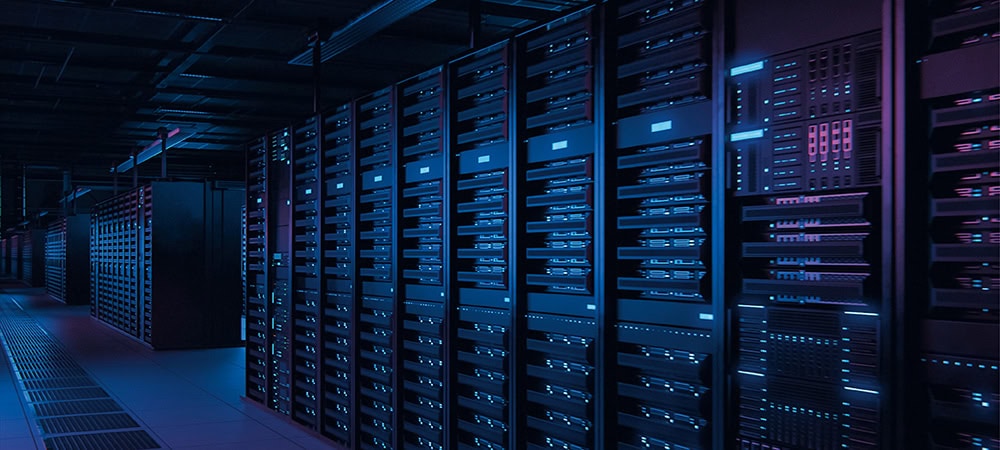SAP Basis with Cloud ALM and more


A two-day SAP Community Summit on June 5 and 6 in Salzburg will discuss all aspects of S/4 conversion from the perspective of SAP Basis.
When SAP announced last year that the ERP group would be acquiring the start-up LeanIX, SAP CEO Christian Klein said: "Systems and processes go hand in hand. Together with LeanIX, we want to offer a unique transformation suite to provide our customers with holistic support in their business transformations. Based on our decades of expertise, we will integrate generative AI to offer self-optimizing applications and processes that help companies achieve important goals such as maximizing their cash flow while minimizing their environmental footprint."
For many months, the SAP community has been discussing the use of generative AI, the need for ESG, environment, social and governance, as well as the optimization of business processes through process mining (Signavio) and enterprise architects (LeanIX). At the center of all considerations, however, are the S/4 conversion and SAP's transformation suite consisting of Cloud Application Lifecycle Management (ALM), automated testing, process mining and ERP architecture. This transformation suite still needs to be supplemented by the topic of license management and then forms the basis for a successful S/4 conversion.
SAP Basis
An S/4 conversion cannot succeed without an established and robust SAP Basis. The task of SAP Basis is the operational part of the transformation suite. This SAP Basis has always existed for existing customers: Under R/3, the construct had the name Customer Competence Center (CCC), was certified by SAP and was located directly in the IT department of existing SAP customers. The CCC was later renamed CCoE and from then on was called the Customer Center of Expertise. It acts as a hub for collaboration between the IT department and the company's business units. The CCoE's task is to promote transparency, efficiency and quality in the implementation, innovation and operation of SAP software solutions and services. CCoEs should have the knowledge, skills and network to drive continuous improvement and innovation at a central level.
SAP user companies want clearer roadmaps from SAP. They are asking themselves how they can map their end-to-end processes with SAP solutions in the future and how they can specifically design the license models for this. How does the SAP strategy fit in with the needs of
User company? What does the CIO's wish list look like? What should SAP ensure?
The DSAG user association welcomes the expansion of the Rise with SAP program and the establishment of the new Customer Services and Delivery division with Thomas Saueressig in charge. "Supporting and accelerating the cloud transformation in user companies with this division is a promising approach that must now prove itself in reality," comments Christine Grimm, DSAG Board Member for Transformation and Sustainability. SAP is thus taking up a long-standing DSAG demand to support customers even more intensively in their transformation processes. From DSAG's perspective, the software manufacturer is thus taking an important step towards better supporting customers with the technical and business challenges of migrating to the cloud. It is also a signal that customers' previous investments are being recognized.
Cloud-first business strategy
Earlier this year, SAP introduced resources, services and financial incentives to help existing customers migrate to a private cloud. The Rise with SAP Migration and Modernization program offers support for two fundamental problems that companies face when moving to the cloud: Scale and cost. It aims to provide the confidence needed to migrate even highly complex ERP systems to the cloud by eliminating the need for in-house code development, reducing data silos and reducing process complexity.
"Every company needs a cloud-first business strategy," explains Eric van Rossum, Chief Marketing Officer for Cloud ERP at SAP. "It's more important than ever that customers start migrating and modernizing now to take advantage of the latest cloud innovations, such as AI and sustainability solutions."
The Rise with SAP Migration and Modernization programme is designed to help companies become and remain innovative. After the migration to the cloud, SAP wants to take over the management of customer systems and thus ensure greater reliability, more security and better compliance. Regardless of whether companies use ERP/ECC 6.0 or S/4 Hana, the new SAP initiative aims to support all steps from preparation to go-live with digital self-service tools and employee-supported services.
Migration and Modernization
"With the current announcement, SAP is making it clear that it is aware of the complexity of the challenges that customers face when moving to the cloud. At the same time, their previous investments in existing systems are being taken into account," explains Christine Grimm from the DSAG Executive Board. "By expanding Rise with SAP to include financial incentives and support, SAP is reaffirming its promise to actively support customers on their journey to the cloud and thus make the transition easier. At DSAG, we appreciate this initiative and the goodwill shown by SAP. The aim must be to further improve and expand this offer in cooperation with SAP so that the special requirements and problems of our members who decide to transform to the cloud are taken into account. In this way, we want to ensure that they benefit fully from the extended possibilities and innovations of Rise with SAP."

According to last year's DSAG investment report, more than half of those surveyed are not yet very far along with their digital transformation. With regard to the ERP solutions used, it is encouraging that more and more companies are switching to S/4, which is probably also related to the end of standard maintenance for the Business Suite 2027. However, around half of the companies surveyed still have the migration ahead of them. In addition, many of the conversions are currently technical migrations and therefore genuine transformations and S/4 in the public cloud are still a long way off. "In light of the announcement at the SAP annual press conference in July 2023 that significant innovations will only be offered to customers with a Rise or Grow contract in future, it will be exciting to see how customers decide on their transformation projects," says Jens Hungershausen, DSAG Chairman of the Executive Board.
The challenge is that not only a single system has to be touched and updated in this way, but that existing SAP customers have to orchestrate an entire system landscape, which may consist of numerous ECC systems across which the data and processes are currently distributed. This ECC system landscape also includes various SAP systems and applications; in addition to the classic ERP, these can be various systems from the Business Suite 7 portfolio (BW, PI/PO, CRM, APO, etc.) or connected applications (e.g. Business Objects).
In the past, SAP had a separate program for each of these applications to help customers switch to the new architecture. However, these individual programs ignored the fact that the customer's business process does not end with this application and therefore only provided limited help to existing SAP customers. In the worst case, the individual interests of these programs actually ended up confusing the user, as they no longer knew where to start.
In transformation projects, appropriate space must be given to AI-based value creation and the implementation of AI services. The implementation of AI creates new roles and jobs, and the integration and use of AI-based solutions opens up new opportunities for companies in terms of more efficient, automated processes and operational efficiency. DSAG is aware of the responsibility that digitalization entails and is actively committed to providing continuous training and further education on new technologies and methods. At the same time, DSAG shares best practices to help companies shape their digital journey sustainably and responsibly.
Concrete assistance in the digital transformation could be provided by AI-supported migration services to interpret and evaluate mass data. In terms of process integration, personalized and predictive assistance and training content that can be covered by AI services would also be useful.
Signavio and LeanIX
The acquisition of the start-up LeanIX helps SAP to expand its portfolio for business transformation: customers will gain access to a comprehensive suite for continuous business transformation and will be able to optimize their business processes with the help of artificial intelligence. LeanIX, an unlisted company, has been a strategic partner of SAP and Signavio for ten years. Many CIOs use LeanIX's offerings as part of their digital transformation with Rise with SAP.
Following Cloud ALM, automated testing and Signavio for Process Mining, LeanIX is the final component of SAP's transformation suite for the time being. The framework is designed to help existing SAP customers to manage changes in their business environment more easily and improve their business processes in the long term. LeanIX complements Signavio's existing transformation capabilities and aims to provide users with a complete overview of their IT landscapes. According to SAP, they need this to make their business transformation successful. The combined offering provides a comprehensive foundation for AI-driven process optimization.
According to SAP, Application Lifecycle Management is a path to the hybrid cloud: regardless of whether the core ERP processes continue to be operated in-house (on-prem) or are consumed from the cloud - the overall landscape of ERP applications will be at least partially consumed from the cloud and will therefore be hybrid.

Compared to the monolith of the past, hybrid cloud solutions offer a high degree of flexibility, dynamism and agility, but must also be managed in their entirety and with a view to the entire business process. To achieve this, SAP offers the Cloud ALM solution as part of its Cloud Enterprise Support, a platform for managing data transformation, services and ultimately cross-system business continuity, including the LeanIX framework since the beginning of this year.
Cloud ALM
Cloud ALM is therefore the further development of SAP Solution Manager (SolMan) for the new reality of hybrid cloud landscapes and is itself consumed entirely from the cloud. It supports existing SAP customers in the transformation of business processes and data and is integrated for this purpose with Signavio for process transformation, the SAP Business Transformation Center for data migration and LeanIX as an enterprise architecture model. Cloud ALM is an open platform that also integrates and standardizes external systems for telemetry, data integration and development control. As a cloud solution, it should not only be easy to introduce and scale, but can also support and optimize system implementation and usage in a targeted manner via integrated best practices and comprehensive analysis of system usage in a data lake (powered by AI). This also includes the connection and inclusion of test systems, which can be used to automatically test and validate the implemented business processes initially and on an ongoing basis.
The SaaS offering from LeanIX makes it possible to visualize an entire IT application landscape, identify outdated applications, facilitate the definition of a target state and plan new IT architecture roadmaps. Lean-IX has launched an AI assistant on the market to support existing SAP customers in leveraging the potential of generative AI for the management of IT landscapes. This can increase the degree of automation in the management of IT landscapes and lays the foundation for intelligent recommendations for the transformation of IT landscapes of the future.
Transformation suite
SAP's business transformation solution suite is designed to provide a comprehensive view of business processes, including mapping process dependencies and visualizing the impact of potential transformations. Lean-IX's IT landscape transformation capabilities, combined with Signavio's process transformation suite, Rise with SAP and the SAP Business Technology Platform (BTP), can enable existing SAP customers to create a culture of continuous adaptability and improvement.
"For over ten years, we have stood for a very clear customer-centric approach, superior user experience and seamless ecosystem integration, making us a leader in the Enterprise Architecture Management category," says André Christ, Co-Founder and CEO of LeanIX. "Our strategy is to enable organizations to continuously transform in a rapidly changing business environment. With an integrated, comprehensive view of IT applications and business processes, we accelerate modernization, reduce transformation risks for our customers and ensure their ability to adapt to technological changes such as cloud and AI."





